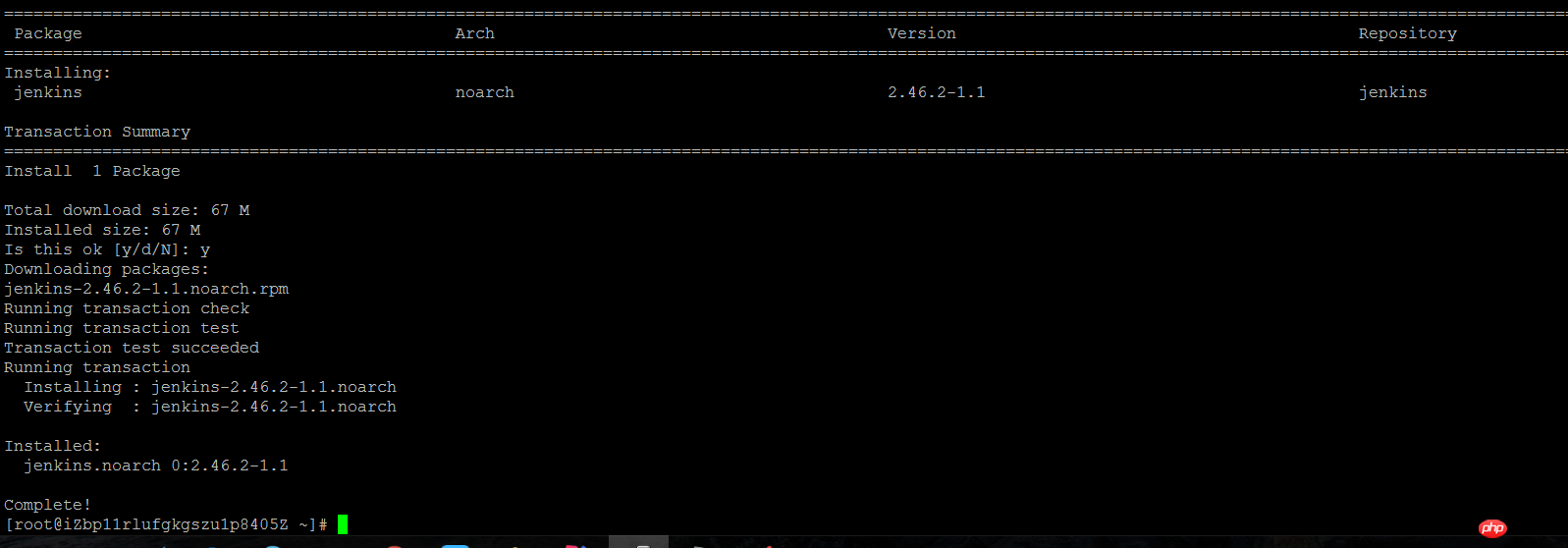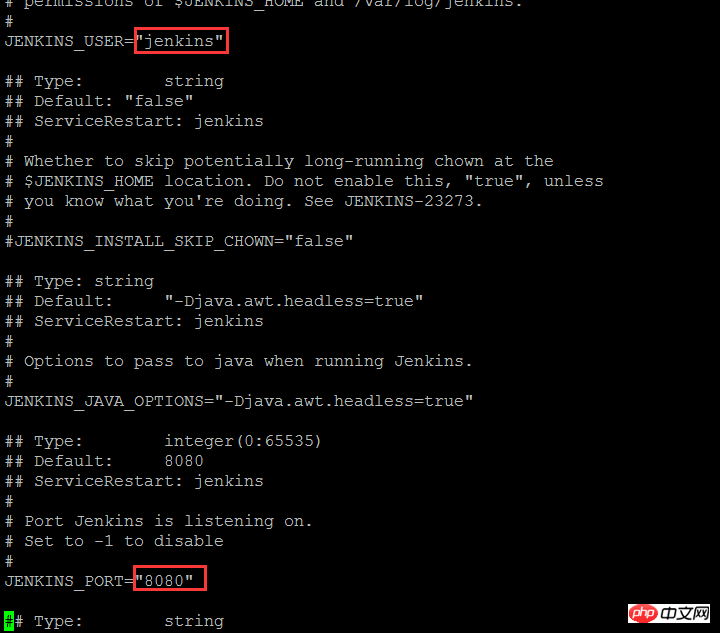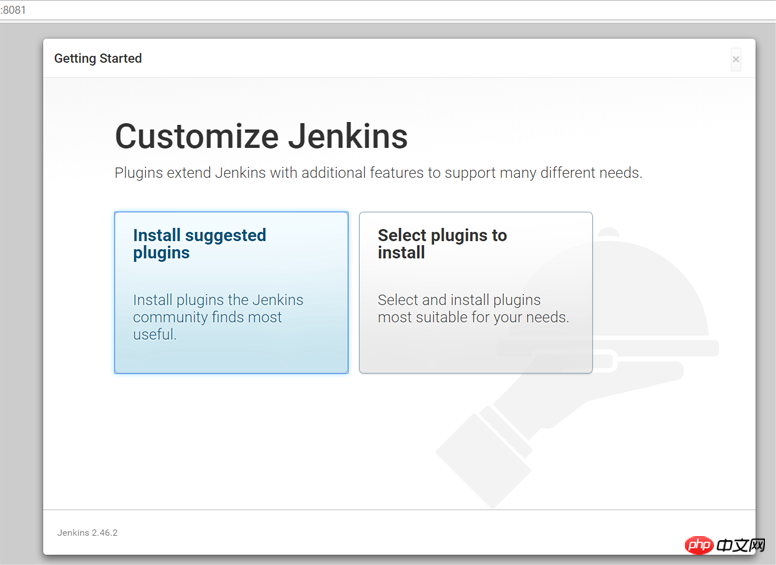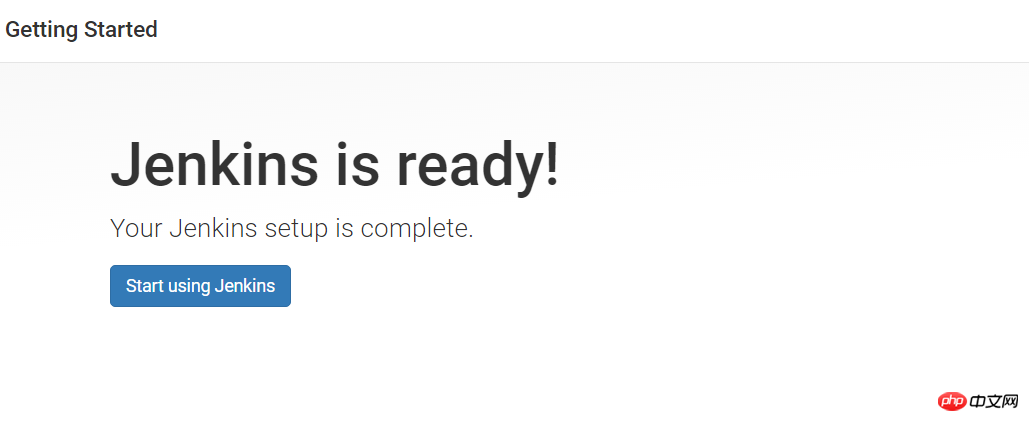 Operation and Maintenance
Operation and Maintenance
 Linux Operation and Maintenance
Linux Operation and Maintenance
 Jenkins installation tutorial on linux server (picture)
Jenkins installation tutorial on linux server (picture)
Jenkins installation tutorial on linux server (picture)
Jenkins is an open source continuous integration tool written in java and is currently widely used by companies at home and abroad. This chapter teaches you how to install Jenkins on the linux server.
Jenkins is an open source continuous integration tool written in java and is currently widely used by companies at home and abroad. This chapter teaches you how to install Jenkins on a Linux server.
1. Obtain a linux server
To install git under linux, you must first have a linux server. As a novice , the machines on hand must all be Windows, and installing a virtual machine is simply torture for a novice like me; the simplest way to obtain a Linux server here is to rent one from Alibaba Cloud. Select CentOS7.3 64-bit as the image.

2. Install jdk
The operation of Jenkins requires jdk, so we must install jdk before installing Jenkins . Students who have no installation experience can refer to my other tutorial on installing jdk on a Linux server. Portal: Install jdk on the linux server
3. Install Jenkins with yum
It is recommended to use yum to install Jenkins, which is the simplest and most convenient.
There is no Jenkins in yum repos by default. You need to add the Jenkins repository to yum repos first.
sudo wget -O /etc/yum.repos.d/jenkins.repo https://pkg.jenkins.io/redhat-stable/jenkins.repo sudo rpm --import https://pkg.jenkins.io/redhat-stable/jenkins.io.key

yum installation Jenkins
yum install jenkins
Then you can see that the system starts to download and install automatically.
When prompted whether to download, enter y and press Enter.
Wait patiently for the installation to complete.

#Now Jenkins has been installed, but it is best to modify the configuration slightly before starting it. By default, Jenkins is started using the Jenkins user, but this user is not currently granted permissions by the system. Here we change the startup user to root. In addition, the default port of Jenkins is 8080, which conflicts with the default port of tomcat. We also modify the default port. port.
Enter the command to enter the Jenkins configuration file
vi /etc/sysconfig/jenkins
It is easy to find in the configuration file

Modify the configuration here
JENKINS_USER="root" JENKINS_PORT="8081"

After modifying the configuration, saveExit.
Okay, now the configuration file has been modified and Jenkins can be started.
Enter the startup command to start the Jenkins service.
service jenkins start

OK indicates that Jenkins started successfully.
Enter ip:8081 in the browser to enter the Jenkins login page.

After entering the login page, Jenkins prompts us to enter the super administrator password to unlock. According to the prompts, we can find the password in the /var/lib/jenkins/secrets/initialAdminPassword file.
Enter the command to find the password.
tail /var/lib/jenkins/secrets/initialAdminPassword

After finding the password, copy the password, paste it into the Jenkins unlock page, and click Continue to continue the initialization configuration. After a short wait, you will enter the plug-in installation page.

Here we click Install suggested plugins to install the default plugins. Of course, you can also click another button to install the specified plugins.
After clicking, the page enters the plug-in download and installation page.

Wait patiently for all installations to be completed. After the installation is completed, the page automatically enters the administrator accountRegistration page.

#This page must be familiar to everyone, please enter your information to register. After entering the information, click Save and Finish.

Click Start using Jenkins to enter the main Jenkins page.

The above is the detailed content of Jenkins installation tutorial on linux server (picture). For more information, please follow other related articles on the PHP Chinese website!

Hot AI Tools

Undresser.AI Undress
AI-powered app for creating realistic nude photos

AI Clothes Remover
Online AI tool for removing clothes from photos.

Undress AI Tool
Undress images for free

Clothoff.io
AI clothes remover

AI Hentai Generator
Generate AI Hentai for free.

Hot Article

Hot Tools

Notepad++7.3.1
Easy-to-use and free code editor

SublimeText3 Chinese version
Chinese version, very easy to use

Zend Studio 13.0.1
Powerful PHP integrated development environment

Dreamweaver CS6
Visual web development tools

SublimeText3 Mac version
God-level code editing software (SublimeText3)

Hot Topics
 1378
1378
 52
52
 How to start nginx in Linux
Apr 14, 2025 pm 12:51 PM
How to start nginx in Linux
Apr 14, 2025 pm 12:51 PM
Steps to start Nginx in Linux: Check whether Nginx is installed. Use systemctl start nginx to start the Nginx service. Use systemctl enable nginx to enable automatic startup of Nginx at system startup. Use systemctl status nginx to verify that the startup is successful. Visit http://localhost in a web browser to view the default welcome page.
 How to check whether nginx is started
Apr 14, 2025 pm 01:03 PM
How to check whether nginx is started
Apr 14, 2025 pm 01:03 PM
How to confirm whether Nginx is started: 1. Use the command line: systemctl status nginx (Linux/Unix), netstat -ano | findstr 80 (Windows); 2. Check whether port 80 is open; 3. Check the Nginx startup message in the system log; 4. Use third-party tools, such as Nagios, Zabbix, and Icinga.
 How to start nginx server
Apr 14, 2025 pm 12:27 PM
How to start nginx server
Apr 14, 2025 pm 12:27 PM
Starting an Nginx server requires different steps according to different operating systems: Linux/Unix system: Install the Nginx package (for example, using apt-get or yum). Use systemctl to start an Nginx service (for example, sudo systemctl start nginx). Windows system: Download and install Windows binary files. Start Nginx using the nginx.exe executable (for example, nginx.exe -c conf\nginx.conf). No matter which operating system you use, you can access the server IP
 How to solve nginx403 error
Apr 14, 2025 pm 12:54 PM
How to solve nginx403 error
Apr 14, 2025 pm 12:54 PM
The server does not have permission to access the requested resource, resulting in a nginx 403 error. Solutions include: Check file permissions. Check the .htaccess configuration. Check nginx configuration. Configure SELinux permissions. Check the firewall rules. Troubleshoot other causes such as browser problems, server failures, or other possible errors.
 How to solve nginx403
Apr 14, 2025 am 10:33 AM
How to solve nginx403
Apr 14, 2025 am 10:33 AM
How to fix Nginx 403 Forbidden error? Check file or directory permissions; 2. Check .htaccess file; 3. Check Nginx configuration file; 4. Restart Nginx. Other possible causes include firewall rules, SELinux settings, or application issues.
 How to solve nginx304 error
Apr 14, 2025 pm 12:45 PM
How to solve nginx304 error
Apr 14, 2025 pm 12:45 PM
Answer to the question: 304 Not Modified error indicates that the browser has cached the latest resource version of the client request. Solution: 1. Clear the browser cache; 2. Disable the browser cache; 3. Configure Nginx to allow client cache; 4. Check file permissions; 5. Check file hash; 6. Disable CDN or reverse proxy cache; 7. Restart Nginx.
 How to check whether nginx is started?
Apr 14, 2025 pm 12:48 PM
How to check whether nginx is started?
Apr 14, 2025 pm 12:48 PM
In Linux, use the following command to check whether Nginx is started: systemctl status nginx judges based on the command output: If "Active: active (running)" is displayed, Nginx is started. If "Active: inactive (dead)" is displayed, Nginx is stopped.
 How to clean nginx error log
Apr 14, 2025 pm 12:21 PM
How to clean nginx error log
Apr 14, 2025 pm 12:21 PM
The error log is located in /var/log/nginx (Linux) or /usr/local/var/log/nginx (macOS). Use the command line to clean up the steps: 1. Back up the original log; 2. Create an empty file as a new log; 3. Restart the Nginx service. Automatic cleaning can also be used with third-party tools such as logrotate or configured.



